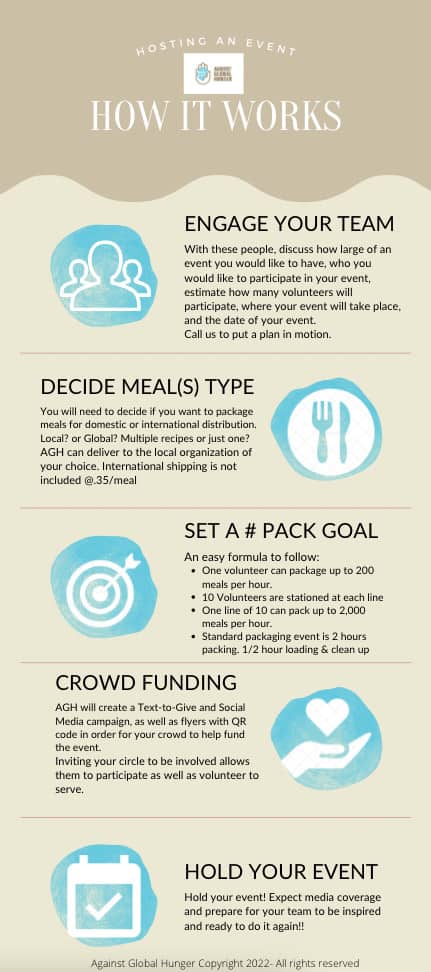A vast majority of people facing hunger in the United States are forced to make difficult decisions, and sometimes food is at the bottom of the list. Food-insecure people are often pulled between paying things like bills, transportation, or rent, and food is purchased with what money is left over, if any. Unfortunately, this struggle can be passed down from generation to generation, and Against Global Hunger is on a mission to halt the generational challenges of hunger.
Food security is the measure of a household’s ability to provide enough food for every person in the household to have an active, healthy life, and it is an effective way to assess the risk of hunger.

Hunger in the United States
Hunger in the United States of America affects millions of Americans, which means it can indirectly affect everyone. No one is immune to potential food insecurity. As we learned from the COVID-19 pandemic lockdowns, anyone could lose everything at any time. With layoffs or business closures, upper and middle-class families were also affected. Food insecurity doesn’t just affect the underserved. The already high rate of food insecurity rose considerably during the pandemic lockdowns.
According to the USDA’s Household Food Insecurity in the United States report, more than 35 million people in the United States experienced hunger in 2019, and that number grew during the pandemic. U.S. households with children are more likely to experience food insecurity, and that includes rural, suburban, and urban communities.
Volunteer With Against Global Hunger
Against Global Hunger has created partnerships with schools, organizations, and church groups in an attempt to put an end to hunger in the United States. AGH joins forces with volunteers and organizations to package highly nutritious food and then distribute it locally and globally.
AGH is on a mission to get food to the people who need it most. Partnerships are crucial to the food-packing process, and it couldn’t be done without caring missionaries, volunteers, organizations, and donors.
Here are just a few examples of how you can help Against Global Hunger:
- Filling food boxes
- Cleaning
- Filing
- Moving boxes
- Labeling bags
- Answering the phone
- Helping set up for an event
Hunger During the Pandemic
More than 42 million people experienced food insecurity during the pandemic, and that includes a potential 13 million children. The expression “I’m one flat tire away from losing everything” was amplified during the pandemic, but there were many other disasters to choose from. The pandemic has severely impacted families that were already living paycheck to paycheck, and it put a strain on food banks and food service organizations.
Everyone Can Be Affected
Again, no one is immune to the potential of food insecurity, and millions of people in America could lose everything over a job layoff, medical emergency, or car repair. However, hunger doesn’t affect everyone equally. Seniors and children are often affected more than other groups, and hunger definitely affects our neighbors who live in poverty.
Food insecurity is much higher for African American, Latino, and Native American families due to several factors, including lack of job opportunities, resources, and federal funding. This can be a hamster wheel that seems impossible to get off of, and some families have lived in poverty for generations. To achieve a hunger-free America, we must address the root causes of hunger and poverty, which can stop or slow down generational food insecurity.
Millions of children and families living in America face hunger and food insecurity every day.
Federal Food Programs
There are several federal nutrition programs that assist low-income families with food, but there is now an increasing need for middle-class families to receive food. However, most of these families don’t qualify for food program services, which can put an even bigger burden on local food banks.
